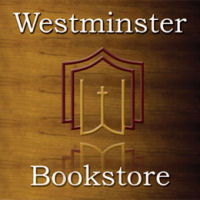 Now, instead of seals being opened, we have a new cycle; this time with trumpets being blown. Again, as before, each trumpet ushers in new disasters:
Now, instead of seals being opened, we have a new cycle; this time with trumpets being blown. Again, as before, each trumpet ushers in new disasters:- First Trumpet: Hail, Fire, Blood; All grass is burned up
- Second Trumpet: Sea of Blood, Sea Life Killed, Ships Destroyed
- Third Trumpet: Wormwood in the water makes it undrinkable; Many die from the bitter water
- Fourth Trumpet: Sun darkened, Moon, and Stars darkened
These scenes should not be seen as depicting future disasters for the following reasons:
- "After the sixth seal is opened, the sun becomes black...the stars fall, and the sky vanishes, which seems like a decisive end of heavenly bodies, yet by Revelation 8, the sky and the heavenly bodies are back again so that they can become dark all over again in the new cycle of threats."
- In 8:7 all of the grass on the earth is burned up, and yet we see that in 9:4 the grass has very quickly returned so that God can tell the locusts not to eat it up. "These inconsistencies disrupt attempts to take the visions as a linear sequence of events" (97).
Rather, according to Koester, these "stylized" events are warnings designed to "strip away the readers' sense of security," and thus bring repentance. He cites 9:20 as evidence. In spite of all these events, the wicked "did not repent of the works of their hands or give up worshipping demons and idols." As before, again and again, Revelation is pressing the readers of the seven churches not to find security in the World, because that security is an illusion, preserved only temporarily by God Himself.
Just as the first four trumpets bring danger upon the earth, the fifth trumpet shows that there is danger from under the earth, as well. "The text has a surreal quality that makes it impossible to situate in time and space - one would be hard pressed to locate the shaft of the bottomless pit on a map - but the repulsive images that appear effectively display the horrors of falling under God's wrath" (99).
Chapter 11 opens with John measuring the temple and altar, which Koester identifies as representing "the Christian community being preserved despite threats by the unbelieving world to overwhelm it. The inner part of the sanctuary, which is kept safe from the nations, is the community in which true worship continues. The comment about the outer court being given over to the nations cautions that God will allow a part of the community to come under the sway of the pagan world" (107).
The two witnesses, who represent the "community of faithful Christians," make an appearance in 11:3-14. Koester points out the different elements of their witness:
- The speech of the witnesses is like fire; a trait shared by the prophet Jeremiah (Jer. 5:14).
- They can call fire from heaven and stop the rain, like the prophet Elijah.
- They turn water to blood like Moses.
- They witness for God unto death. "The deaths of these witnesses are parabolic of the fate of the faithful in many times and places."
The blowing of the seventh trumpet results in praises to God being sung in heaven. In what sense, then, is the seventh trumpet a "woe"? Koester points out that "God's kingdom does not bring the destruction of the world, but the destruction of 'those who destroy the earth' (11:18)." He also points out that the "appearance of the ark in 11:19 is a signal that people should be prepared to meet God, but such a meeting can bring either blessing or judgment...The lightning, thunder, earthquake, and hail portend disaster for his adversaries (11:19)."



No comments:
Post a Comment
Before posting please read our Comment Policy here.
Think hard about this: the world is watching!